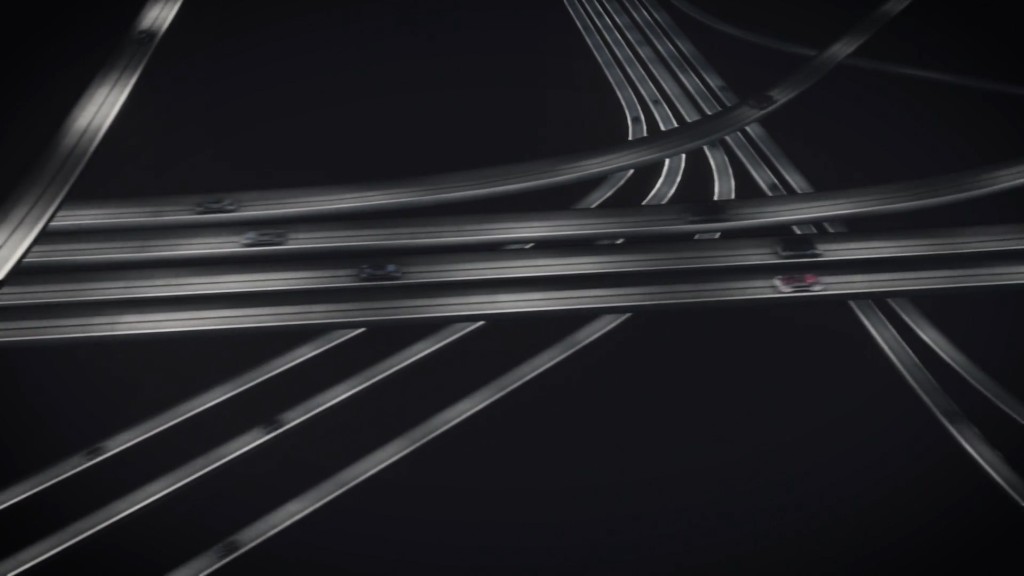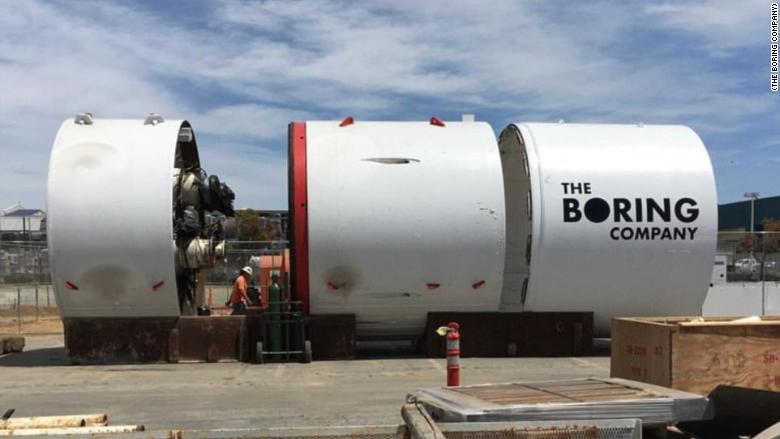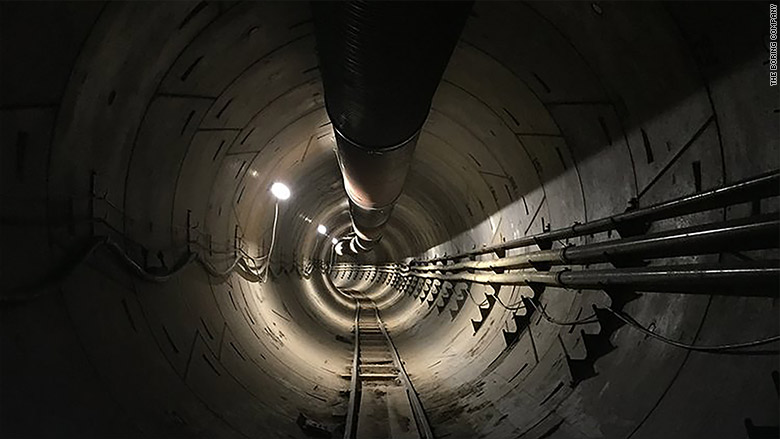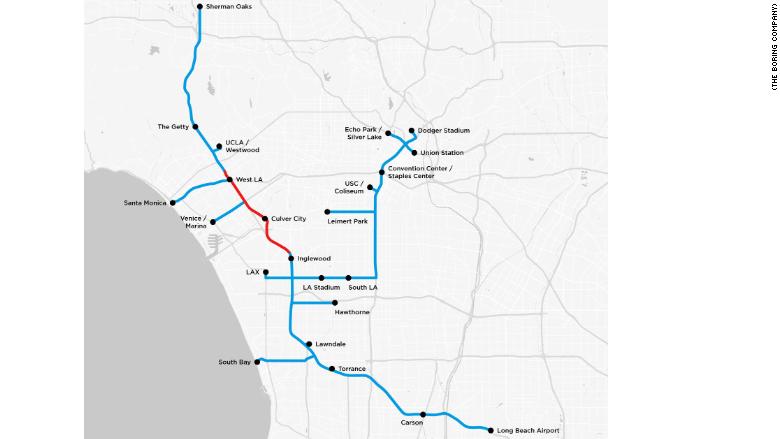
As if building electric cars and shooting rockets to Mars weren't enough work, Elon Musk has a new project: subways.
Musk's The Boring Company released a map this week, sketching out a potential new tunnel system for Los Angeles that would transport cars and mass transit.
The underground transportation system, which the Boring Company is calling Loop, would ferry autonomous electric skates around tunnels at 125 mph to 150 mph. Transportation would be point-to-point, rather than regularly stopping at multiple stations like a subway train.
His company, which is less than a year old, envisions fixing congestion in cities -- a near universal problem. Commutes could be quicker and more pleasant.

If completed, the roughly 60-mile system would position Los Angeles as the home of one of the nation's largest underground transportation systems. The city has long lagged behind the rest of the country in terms of public transportation.
The golden age of subway construction passed decades ago. Tunnels cost billions of dollars to build, and most cities struggle to maintain existing systems. Yet Musk -- motivated by a hatred of L.A. traffic -- is modifying tunnel equipment to build a network of low-cost tunnels to try and solve congestion.
Musk's tunnel ambitions aren't limited to Los Angeles. The Boring Company has government permission for a 10.1-mile stretch in Maryland, and is bidding to build a high-speed subway from downtown Chicago to O'Hare International Airport.

But can Musk pull it off?
Transportation experts warn that Musk has taken on a Herculean task.
"The viability of the business model is a significant hurdle probably only eclipsed by the complexity of the environmental review and the possibility of legal challenges," cautioned Juan Matute, associate director of UCLA Lewis Center and the Institute of Transportation Studies.
But Musk has a track record of accomplishing some feats. His auto company, Tesla, has made electric cars desirable, despite its issues keeping up with consumer demand. Meanwhile, SpaceX -- where Musk is also the CEO -- has created low-cost, reusable rockets.

According to a Boring Company spokesperson, the Los Angeles project will require no public funding. It is counting on decreased tunneling costs to fundamentally upend the economics of building and operating a transit system.
"It's refreshing that somebody has this idea," Clifton Hood, the author of 722 Miles: The Building of the Subways and How They Transformed New York, told CNN Tech. "It's been about 100 years since anyone thought about doing this. But it sounds like a fantasy."
UCLA's Matute said Hong Kong is the world's only transit system that doesn't require public subsidies to break even. It has the advantage of profits coming not from transportation, but from real estate development.
By not seeking public funding, The Boring Company is returning to the early days of subway systems. They were privately operated and built in new residential and commercial developments. This effort increased the value of developments, which made money for the businesspeople who owned the land and subways. When the Great Depression hit, governments stepped in and public funding became the norm.
Related: All the quirky details about the Boring Company
So far, The Boring Company has completed a short tunnel segment by SpaceX's Los Angeles headquarters. It has applied for an excavation permit for a 6.5-mile route in Los Angeles, shown in red on the map below.

A spokeswoman with the city's Bureau of Engineering said it will review the application in the coming weeks and meet with the Boring Company to determine next steps.
"L.A. has always been a place where innovators come to build new ideas that can change our lives. Looking forward to exploring how Elon Musk's Boring Company could help us build a better future for our city," Mayor Eric Garcetti tweeted recently.
Spokesmen for the mayor and the Boring Company stressed that there would be a robust public discussion before moving forward. The Phase 2, roughly 60-mile tunnel network is a concept, not a finalized plan.
However, Matute cautions that the tunnels could become congested. Loop will use a lift to deliver vehicles from the tunnels to surface-level streets.
But if these streets are ever congested, there may be no space to place vehicles, triggering a line in the tunnel.
Traditional subway systems don't face this problem, as dedicated underground stations provide a place for people to board and exit trains.
Yonah Freemark -- the founder of The Transport Politic, a website tracking public transportation -- warned that the impact of Musk's Loop on existing transportation systems needs to be understood. Tunnels might make vehicle transportation more appealing, causing increased traffic on roads and near stations.
It's also unclear if Loop will connect with Los Angeles's existing mass transit systems.
"We're all in a bit of darkness about what's going on," Freemark said. "Putting some lines on a map is not being open about your plans."

